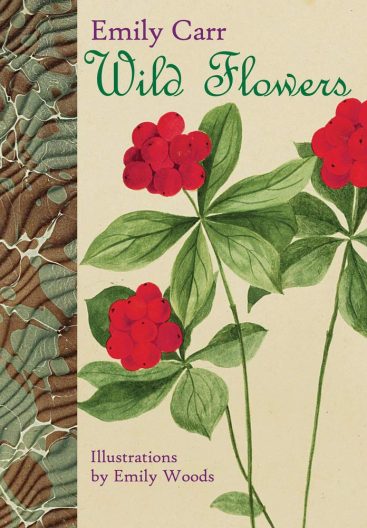 Emily Carr (1871-1945) was a native of Victoria, British Columbia and lived much of her life in that city. She is best known as a painter, but was also an accomplished writer. Many of her works in both disciplines reflected her passionate interest in the indigenous peoples of Vancouver Island and other parts of British Columbia.
Emily Carr (1871-1945) was a native of Victoria, British Columbia and lived much of her life in that city. She is best known as a painter, but was also an accomplished writer. Many of her works in both disciplines reflected her passionate interest in the indigenous peoples of Vancouver Island and other parts of British Columbia.
She also had a great love for the natural world and would camp out on Vancouver Island in a trailer she named Elephant. While recovering from a stroke, she completed a manuscript in early 1941 about wild flowers, expressing her desire to end her convalescent and experience the rebirth of spring.
Titled “Wild Flowers”, this work was not published until 2006 by the Royal BC Museum. As Carr’s paintings do not feature close-ups, the editor chose to pair her descriptions with the art of Emily Henrietta Woods (1852-1916). An early art teacher of Carr, Woods was noted for her full-size water color illustrations of wild flowers.
Carr has a distinctive way of describing her subjects. This is not a traditional field guide in any way, but reading it will give you a very different appreciation of some of our most familiar plants. She described our native dogwood (Cornus nuttallii) as resembling a “badly cooked flapjack”, Fritillaria affinis as “brown tulips”, while a mock-orange (Philadelphus lewisii) is an “understudy to true orange blossoms.”
Carr also had her own ideas about punctuation, making her plant descriptions especially lyrical. Of our native flowering currant (Ribes sanguineum), she writes: “This bare little bush begins to erupt little bumps all along her wood branches at the first burst of spring every glint of cool sunshine swells the bumps a little more till presently they burst and out squeezes a folded up rosy little tuft of blossom with a sweet, tart smell, very invigorating.”
Excerpted from the Winter 2021 issue of the Arboretum Bulletin